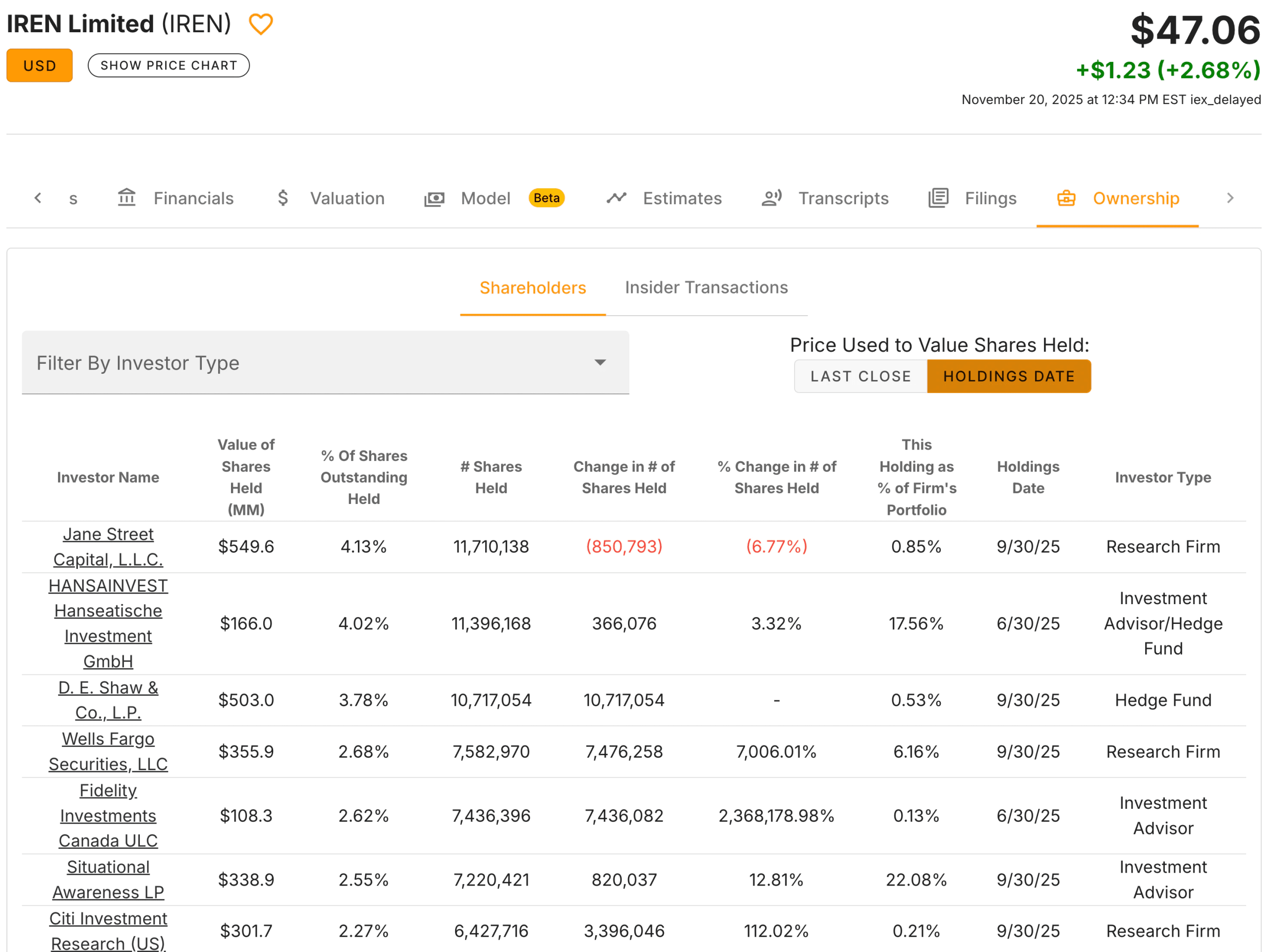Hedge funds can be difficult to follow from the outside as they move billions of dollars across global markets, take concentrated positions, shift themes quickly, and build portfolios around research you rarely see. Most investors only hear about their moves long after the fact, usually through headlines or quarterly disclosures. That delay makes it feel impossible to understand what the smartest money is doing until it is too late.
The truth is simpler, as hedge fund positions are public, which means their buying and selling shows up in filings, updates, and ownership data that anyone can view. The real challenge is finding a way to read that information without getting buried in documents. If you can organize their activity into a clear picture, you can learn a lot about conviction, trends, and ideas worth researching on your own.
This is where structure matters, as watching hedge funds is not about copying every trade or reacting to every headline. It is about noticing when respected managers build positions over several quarters, when top firms align on similar names, and when buying or selling aligns with financial trends. Those signals help you understand market themes through the eyes of professionals.
TIKR makes that process accessible as the Guru Tracker shows portfolios from well-known funds sorted by investing style, and the Ownership tab reveals how position sizes change over time. With both tools working together, you can track hedge fund behavior with the same clarity as professionals, even if you are just starting out.
Why Hedge Fund Activity Matters
Hedge funds make moves based on deep research, management conversations, industry analysis, and long-term views. You may not see the full thesis behind every trade, but their actions still give you useful clues, and when a respected fund builds a large position and holds it, that suggests confidence. When several funds buy the same stock independently, that can highlight a theme worth understanding. When funds trim or exit positions after long holding periods, that can hint at a shift in expectations.
You are not trying to predict the future. You are trying to understand where professional investors see strength, risk, or opportunity. Watching their activity helps you spot ideas earlier, avoid crowded trades at the wrong time, and view market movements with more context.
A Quick Tour of TIKR’s Guru Tracker

The Guru Tracker in TIKR organizes hedge funds by investing style. You can click into categories such as Aggressive Growth, GARP, Value, and other specialty groups. Each category includes a curated list of well-known managers who follow that approach. This makes it easier for beginners to study the investing they care about. Growth-focused investors can explore funds that prioritize high return potential. Value-focused investors can study managers known for patience and discipline.
Once you select a category, TIKR displays a list of funds, along with links to their portfolios. When you click on a fund, you see all reported holdings laid out in a clean table. You can view the size of each position, the percentage of the fund it represents, and the change in shares from previous filings. This helps you understand which stocks matter most to the fund and how their conviction changes over time.
The Guru Tracker gives you clarity because you do not need to memorize fund names or search for filings one by one. You choose a style, pick a manager, and instantly see what they own, what they trimmed, and what they added. For beginners, this is one of the easiest ways to study professional portfolios without feeling overwhelmed.
Track the hedge fund ownership level of each stock with TIKR (It’s free) >>>
How to Read Hedge Fund Portfolios In TIKR

Studying a hedge fund portfolio becomes much easier when you focus on a few core ideas. First, look at the top positions. These are the holdings the fund cares about most. If a stock accounts for a significant portion of the portfolio, it usually reflects strong conviction. Funds rarely allocate that much capital to low-interest ideas.
Next, look at how those positions change across filings. A fund that raises its stake over several quarters is building conviction. A fund that trims consistently may be reducing risk or reassessing its view. TIKR clearly highlights these changes in the holdings table, making it easy to compare periods back-to-back.
Finally, look for new additions. When a fund adds a new stock to its top positions, it often signals a fresh idea. You do not need to buy the stock immediately. You simply mark it for your own research and see whether other funds add it as well.
With TIKR, these signals appear naturally because the layout shows position size, changes, and portfolio weight in the same view. You can study the story without having to search for numbers in multiple places.
A Quick Tour of TIKR’s Ownership View

The Ownership tab complements the Guru Tracker by showing who owns the stock today and how positions shift across investors. It includes mutual funds, hedge funds, index funds, and other institutions. The table shows the value of shares held, the number of shares, the percentage ownership, and the change in the position from the prior period. This helps you understand which firms have meaningful exposure to the stock and whether they are building or trimming.
The ability to filter by investor type is particularly helpful. You can isolate hedge funds, focus on long-term asset managers, or review only specific categories. This level of detail allows you to understand the broader shareholder base and spot patterns across groups.
Ownership data also provides context for conviction. When several major holders increase their positions, that supports a stronger view. When the largest holders reduce their stakes simultaneously, that may prompt further research. TIKR clearly presents those shifts, letting you see the trend without manually reading filings.
Review stock fundamentals in less than 60 seconds with TIKR (It’s free) >>>
How to Interpret Buying and Selling the Right Way
Interpreting hedge fund moves requires balance. A single buy or sale rarely signals much on its own. What matters is the pattern. Repeated buying across several quarters shows a buildup in conviction. Repeated selling can signal a thesis change. Large increases matter more than small adjustments, and consistent alignment across several funds can highlight broader opportunities or risks.
You also want to compare hedge fund activity with the company’s financial results. If several respected funds build positions during a period of improving revenue, margins, or cash flow, that combination is worth paying attention to. If funds sell heavily during a period of weakening fundamentals, that pattern reinforces caution.
TIKR makes this step easier by allowing you to transition from Ownership to Financials or Valuation immediately. The flow keeps your research grounded and helps you avoid assumptions based solely on fund behavior.
Connecting Fund Activity To Your Own Work
Watching hedge fund activity becomes most useful when you treat it as one part of a larger process. You are not copying trades. You are identifying signals, patterns, and ideas that deserve attention. When a respected fund builds a position, you use TIKR to study the company’s financials and valuation. When multiple funds align on a stock, you explore the theme behind that alignment. When funds are reducing exposure, you have to consider whether anything has changed in the business.
This process gives you structure. You stop reacting to headlines and start observing how professional investors move over time. That steady view helps you build your own approach with more confidence.
Track hedge fund buying on TIKR (It’s free) >>>
TIKR Takeaway
Tracking hedge fund activity can feel complicated when you rely on scattered filings or partial information. TIKR removes that friction. The Guru Tracker organizes managers by investing style and gives you instant access to their portfolios, while the Ownership tab shows how positions shift across the broader institutional base. Together, these tools give beginners a simple, clear way to study what the smartest investors are doing without drowning in data.
The strength of TIKR is how easily everything connects. You can see fund activity, review financial results, check valuation, and explore estimates without switching platforms. That flow helps you move from observation to understanding, turning hedge fund activity into a regular part of your research instead of something you look at only occasionally. Over time, this habit helps you invest with more context, more clarity, and more confidence.
Value Any Stock in Under 60 Seconds with TIKR
With TIKR’s new Valuation Model tool, you can estimate a stock’s potential share price in under a minute.
All it takes is three simple inputs:
- Revenue Growth
- Operating Margins
- Exit P/E Multiple
If you’re not sure what to enter, TIKR automatically fills in each input using analysts’ consensus estimates, giving you a quick, reliable starting point.
From there, TIKR calculates the potential share price and total returns under Bull, Base, and Bear scenarios so you can quickly see whether a stock looks undervalued or overvalued.
See a stock’s true value in under 60 seconds (Free with TIKR) >>>
Looking for New Opportunities?
- Discover which stocks billionaire investors are purchasing, so you can follow the smart money.
- Analyze stocks in as little as 5 minutes with TIKR’s all-in-one, easy-to-use platform.
- The more rocks you overturn… the more opportunities you’ll uncover. Search 100K+ global stocks, global top investor holdings, and more with TIKR.
Disclaimer:
Please note that the articles on TIKR are not intended to serve as investment or financial advice from TIKR or our content team, nor are they recommendations to buy or sell any stocks. We create our content based on TIKR Terminal’s investment data and analysts’ estimates. Our analysis might not include recent company news or important updates. TIKR has no position in any stocks mentioned. Thank you for reading, and happy investing!







